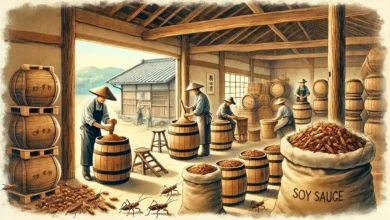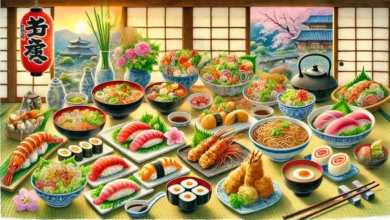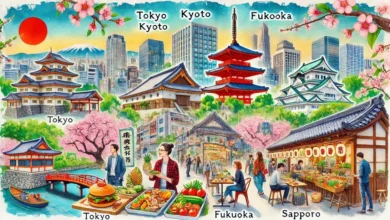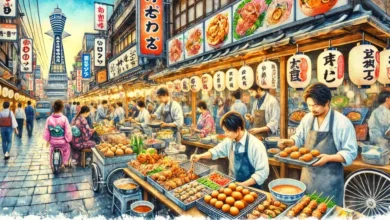Sake in Japan: A Brief History – Perhaps you are unaware.
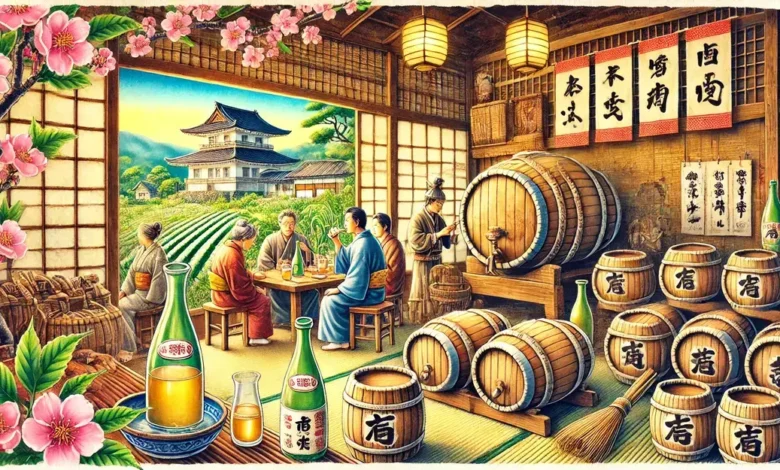
Sake in Japan is a alcoholic beverage created from fermented rice. It is the country’s national beverage and is widely offered during formal ceremonies, special events, and national holidays in Japan, where it is known as nihonshu (literally, “Japanese liquor”). It’s usually served in a sakazuki, a tiny porcelain cup, and poured from a tall bottle called a tokkuri. We examine the extensive history of this traditional Japanese beverage.
Origins
Rice was first grown in Japan over 2000 years ago. After a few hundred years, people started making a drink called sake. The earliest type of sake was called kuchikami-zake. People made it by chewing rice and spitting it into a container. The enzymes in their saliva, along with yeast, turned the rice into alcohol.
By the seventh century, people found better ways to make sake. They didn’t need to chew the rice anymore. The Imperial Palace in Nara even set up a special department for brewing sake in A.D. 689. This helped sake become more popular.
The exact origin of sake is unknown because it’s older than written history. The oldest record of sake production is from China around 500 BC. People would chew grains and nuts and spit them into a tub. The tub was then kept for fermentation.
This method was soon replaced with a better one. People discovered koji, a type of mold enzyme. They applied it to rice to start fermentation. This technique spread across the country during the Nara period (710–794). This led to the sake we know today in Japan.
Back then, the brewing method was quite basic. They used the whole rice grain, including the brown outer parts. Around the year 1000, people started growing koji-kin mold on purpose. They added it to the rice to turn the starch into sugar.
The Tamon’in Diary, written between 1478 and 1618, mentions several parts of the brewing process that are still used today. These include ‘polishing’ the rice to remove the brown outer layer, adding ingredients in three stages, and a form of pasteurization.
Sake wasn’t always clear like it is now. The first time sake was filtered enough to make it completely clear was in 1578. After that, it became the Shogun’s favorite drink.

Production in large quantities
Before the 10th century, the government in Japan was the only one allowed to make sake. But then, temples and shrines started making their own sake. For many years, these temples were the main places where sake was made. By the 1300s, sake had become the most loved drink in Japan.
Restoration of the Meiji Period
During the Meiji Restoration from 1868 to 1912, new rules were made in Japan. These rules let anyone who had the money and skill to make sake start their own brewery. In just one year, over 30,000 new breweries opened in Japan. But, taxes on sake makers started to go up. Because of this, more than two-thirds of these new breweries had to close down. Despite this, some breweries that were owned and run by families managed to survive. These breweries are still making sake today.
The 20th century was a period of great change.
The quality and amount of sake made in Japan have greatly increased because of better brewing methods and equipment. The old wooden barrels used for making sake were replaced with steel tanks. These tanks were cleaner and stronger. At one point, the money the government made from taxing sake was almost 30% of all the tax money they collected. Because of this, the government made it illegal to brew alcohol at home, since they couldn’t tax it. Even today, you need a license to brew alcohol at home in Japan.

In the 1940s, during the war, sake making in Japan took a step back. Because of the war, there were shortages. So, brewers had to start adding pure distilled alcohol to sake in 1943.
Even after the war ended, brewers kept adding alcohol to sake. Sometimes, they also added artificial flavors like sugar and acids. Before the end of the 17th century, only a little bit of distilled alcohol was added to sake. But this was the first time a lot of alcohol was added. Since then, sake with added alcohol has been considered different from pure sake, or junmaishu.
Nowadays, big breweries use computers to make sake on a large scale. But the number of breweries has gone down over the 20th century. There were about 10,000 in 1926, but only 1,742 in 1997. This is because of big improvements in technology. Sake production was at its highest in the 1970s, when modern technology was used more. But it has been going down since then. This might be because of more competition from wine, beer, and other drinks.

In recent years, there’s been a big increase in the making and drinking of premium sake. Premium sake is a special kind of sake that’s only been sold since the 1960s. Even though it’s only a small part of the whole sake market right now, it’s growing.
Even with all the new technology, many small brewers still use old methods to make sake. These methods take a lot more work than the new ones.
What makes each brewery’s sake special is how the expert brewers can control the flavor of the sake. They can make a drink that shows off their skills and the hard work they put into making sake. This gives the sake a unique personality.
The present time

Even though there are only about 2,000 places that make sake in Japan, the drink is becoming very popular in other countries. Now, there are places that make sake in North and South America, China, Southeast Asia, and Australia. There’s also a special day called Sake Day. It’s a traditional Japanese celebration that happens every year on October 1st. Now, people who make sake and people who like to drink it celebrate Sake Day all over the world.

